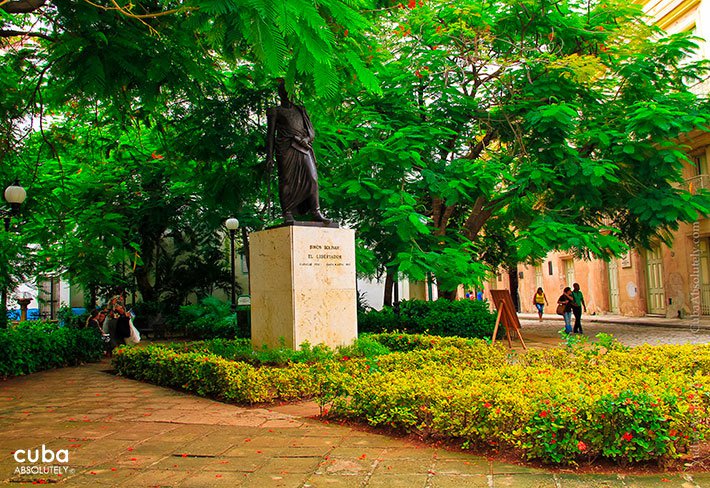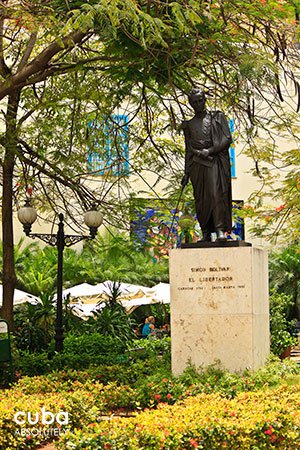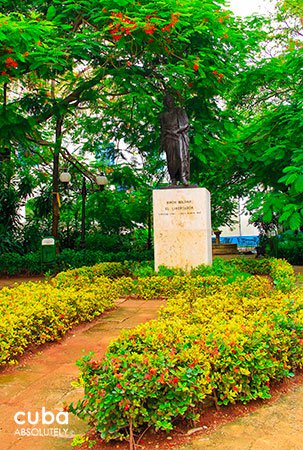North on Mercaderes, you’ll reach Parque Simón Bolívar on the corner of Calle Obrapía. In addition to a statue of the Latin American independence movement leader, the park has a ceramic mural by Venezuelan artist Carmen Montilla.

Basílica Menor y Convento de San Francisco de Asís LH  5+
5+
History & Architecture Initiated in its present form in 1716, this religious edifice was the most important symbol of the presence of the Franciscan order in Havana. It is a remake of an original, …
 BaroqueAdmission: CUC 2Open: 9am-6:30pm dailyOficios e/ Amargura y Teniente Rey, Habana Vieja
BaroqueAdmission: CUC 2Open: 9am-6:30pm dailyOficios e/ Amargura y Teniente Rey, Habana Vieja 
Castillo de los Tres Reyes del Morro LH  5+
5+
Designed by Italian engineer Juan Bautista Antonelli and built by slaves with rocks extracted from the moats in the last decades of the 16th century, the Morro Castle to defend the town of San Cristob …
 Neo-classicalAdmission: CUC 4Open: 10am-7pm daily; Lighthouse: 9am-8pm dailyNorth-eastern side of the harbor.
Neo-classicalAdmission: CUC 4Open: 10am-7pm daily; Lighthouse: 9am-8pm dailyNorth-eastern side of the harbor. 
Museo Nacional de Bellas Artes – Edificio de Arte Internacional LH  5
5
The International collection (Edificio de Arte Internacional) In 2001, after the new venues were chosen for the National Museum of Fine Arts, the international collection was installed in the former C …
 OtherAdmission: CUC 5 / CUC 8Open: 10am-6pm Tues-SunZulueta y San José, Habana Vieja
OtherAdmission: CUC 5 / CUC 8Open: 10am-6pm Tues-SunZulueta y San José, Habana Vieja 
Maqueta de La Habana LH  5+
5+
This scale model of Havana is the third largest scale model in the world. It was built at a scale of 1:1000 and spans over 144 square meters. It is approximately 22 meters long and 10 meters wide and …

Fortaleza de San Carlos de la Cabaña LH  5+
5+
Constructed after the capture of Havana by British forces and named San Carlos de la Cabaña in honor of King Carlos III, this 700-meter long fortress is the largest in the Americas. It was designed by …

El Chanchullero LH  5+
5+
El Chanchullero has got to win the most surprisingly good place in Havana award. This looks like a hole in the wall place in a downright run down looking part of Old Havana. It is a hassle to get to b …

Tren de Hershey LH  5+
5+
In 1926, Pennsylvania based Hershey Corporation built a 135-km-long electric railroad network in Cuba to transport product and personnel from Havana to Hershey’s sugar factory 45 km east of the capita …

Gran Parque Metropolitano (Parque Almendares) LH  5+
5+
Along the banks of the Almendares River is Parque Almendares, also known as Bpsque de La Haband (Havana’s Forest). This is the only urban forest in the city and is a recreational area for Habaneros th …

Plaza de la Catedral LH  5+
5+
The last of the main squares to be created, this is one of Old Havana’s most beautiful spots. Originally, it was named Plaza de la Ciénaga (Swamp Square) because of its muddy terrain, but by the 18th …

Hotel Nacional de Cuba LH  5+
5+
In response to the increasing influx of American tourists in the late 20s (mainly those who were escaping Prohibition, in force in the United States at the time), the construction of a luxury hotel wa …
 Eclectic
Eclectic $61 - $81ROOMS: 426O esquina a 21
$61 - $81ROOMS: 426O esquina a 21 


